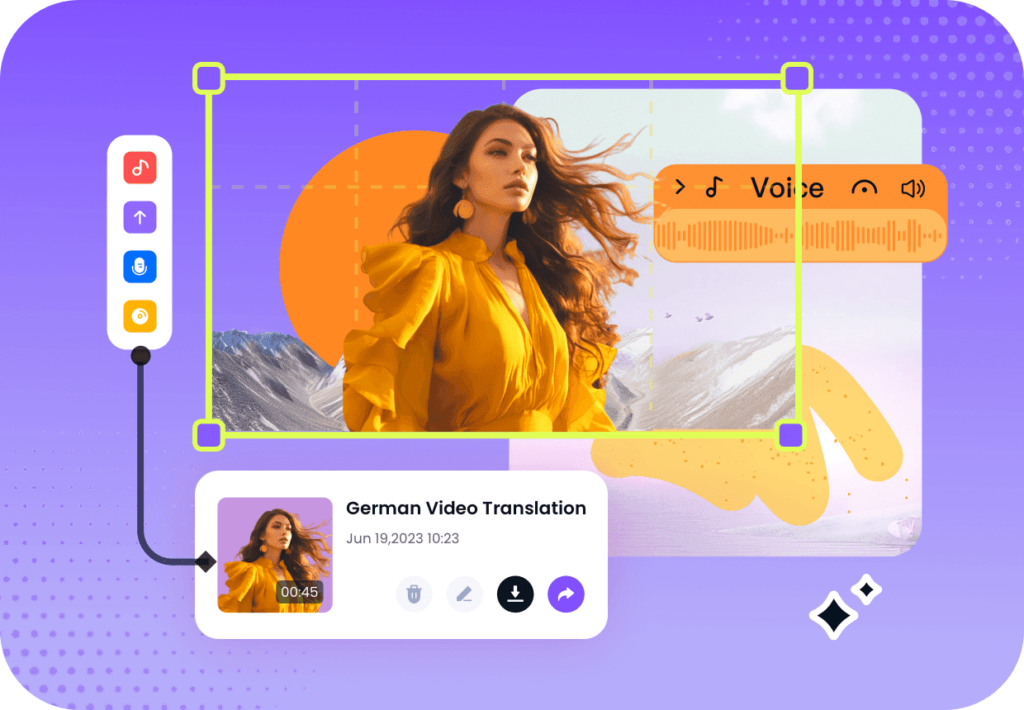
Translation on Social Media,As social media brings together a global audience, brands are realizing the importance of reaching beyond language barriers to connect with diverse followers. Video translation has become an essential tool for expanding reach, fostering inclusivity, and boosting engagement. Translating videos for social platforms helps brands enter new markets, deliver a personalized experience, and build stronger connections with a worldwide audience. Here’s how video translation can drive social media engagement and practical steps to implement it effectively.
1. Why Video Translation Enhances Social Media Engagement
Social platforms like Facebook, Instagram, YouTube, and TikTok cater to global audiences, but language differences can limit access. By using a free video translator, brands can make their content accessible to diverse viewers, allowing them to understand and engage with content they would otherwise skip. Offering translated videos through subtitles, captions, or voiceovers ensures that the message resonates with different cultures, increasing viewer engagement and inclusivity. Whether through subtitles, captions, or voiceovers, translating videos with a free video translator enhances inclusivity and helps foster a loyal, global following.
2. Expanding Reach by Overcoming Language Barriers
When video content is available in multiple languages, it becomes accessible to a broader audience, leading to increased views and interactions. Since social platforms prioritize engagement for content visibility, more diverse interactions can elevate content ranking and reach. Expanding reach by breaking language barriers doesn’t just attract more followers; it fosters meaningful connections. People engage more with content that feels familiar, and language is a critical part of that comfort.
3. Improving Viewer Experience and Understanding
Video translation goes beyond attracting views—it enhances the viewing experience. When audiences can fully understand the content, they’re more likely to engage, comment, and share. Providing content in multiple languages shows viewers that inclusivity matters to the brand, building trust and loyalty. For instance, when viewers see a video in their native language, they’re more likely to appreciate and relate to it, leading to increased engagement such as likes, shares, and follows.
4. Building Cultural Connection and Trust
Culturally relevant content is essential for building trust with diverse audiences. Video translation allows for language adaptation and cultural nuances, ensuring that content feels relatable. By using expressions, slang, or cultural references, brands can make audiences feel seen and valued, creating a stronger bond. This connection not only enhances engagement but also fosters brand loyalty and positive perception.
5. Increasing Shareability of Translated Content
One of the main goals on social media is to encourage sharing, as shared content extends reach exponentially. Translated videos are inherently more shareable since they cater to a broader audience. When viewers watch content in their native language, they’re more inclined to share it with friends and family who speak the same language. This organic reach drives engagement across different regions and helps brands grow faster. Higher share rates also boost social algorithms, further increasing visibility for translated content.
6. Different Types of Video Translation for Social Media
There are multiple ways to translate videos for social media, each with unique advantages. Subtitles and captions are popular as they’re easy to add and widely supported. Subtitles help viewers follow content even if they’re watching with the sound off. Voiceovers, on the other hand, provide a more immersive experience by offering spoken translations. To enhance the translation process, you can explore the best artificial intelligence app available, which can streamline both subtitle generation and voiceover creation with precision.
7. Choosing Platforms for Translated Content
Each social platform has unique demographics, so tailoring translated content to each one is essential. YouTube, for instance, is ideal for longer videos with subtitles, while platforms like TikTok and Instagram favor shorter, subtitled content. Understanding the preferences of each platform’s audience allows creators to optimize translation for maximum engagement. This targeted approach ensures that translated content resonates with the right viewers at the right time.
8. Practical Steps to Implement Video Translation
Video translation may seem complex, but there are tools and services to make it accessible. Start by identifying key languages for your target audience. Use professional translation services or AI-powered tools to create accurate translations. Once translations are ready, add them as captions or subtitles using platform-specific tools. Reviewing the translations for cultural relevance and tone helps ensure the message resonates with each audience group.
9. Leveraging AI for Efficient Translation
AI-powered translation tools are changing how brands approach video translation, allowing for quick and precise subtitle or voiceover generation. Some AI tools even offer real-time translation, which is beneficial for live broadcasts. AI makes translation affordable and accessible for brands with global audiences, enabling them to produce and share multilingual content without extensive resources. By integrating AI, brands can focus on content creation while still reaching a wide audience.
10. Measuring the Success of Translated Content
Tracking translated content’s performance is essential for evaluating its impact on engagement. Most social platforms provide analytics tools to monitor metrics like reach, engagement rate, and viewer demographics. Analyzing these metrics helps brands identify which languages drive the most engagement, allowing them to fine-tune their strategy. Regularly reviewing performance enables brands to refine their video translation efforts and maximize engagement across different language groups.
11. Future Trends in Social Media Video Translation
As technology advances, video translation on social media is expected to become even more sophisticated. Features like AI-driven voice cloning and real-time translation are already emerging, allowing for more natural-sounding voiceovers and seamless interactions. These innovations will make it easier for creators to produce high-quality translated content that resonates globally. With new technologies, social media content will likely become increasingly multilingual, allowing creators to engage audiences with diverse backgrounds more effectively. Video making apps are playing a crucial role in this transformation, enabling creators to easily integrate these features into their content. Staying updated on these trends will give brands a competitive edge in building global engagement.
12. Conclusion: Enhancing Social Media Engagement with Video Translation
Translation on Social Media,Incorporating video translation into social strategies is a powerful way to connect with global audiences and boost engagement. By breaking down language barriers, brands can make their messages accessible to more people, foster connections, and increase viewer interactions. Whether through subtitles, captions, or AI-powered voiceovers, video translation opens doors for brands to grow a loyal following and establish a more inclusive social media presence. Embracing video translation can help brands achieve lasting success in today’s interconnected world.



